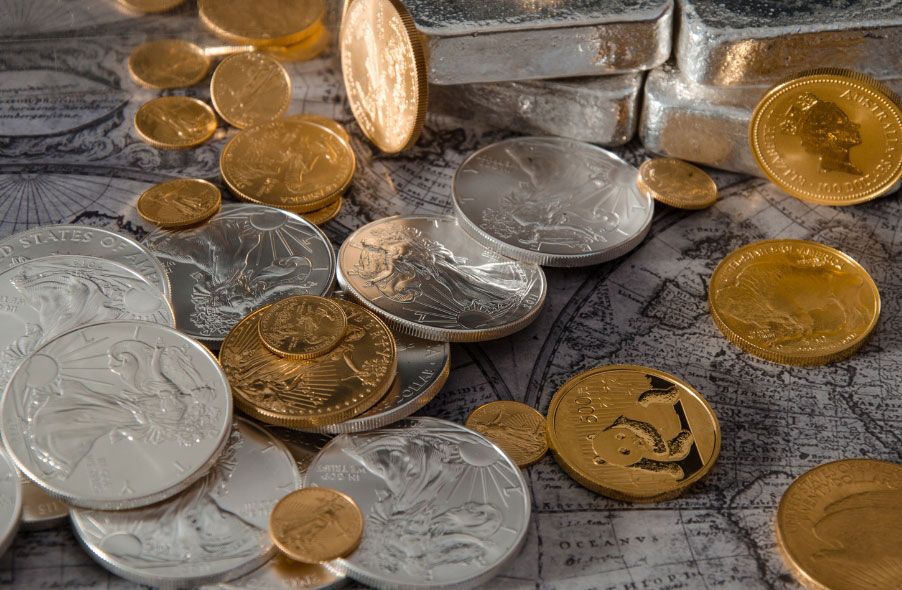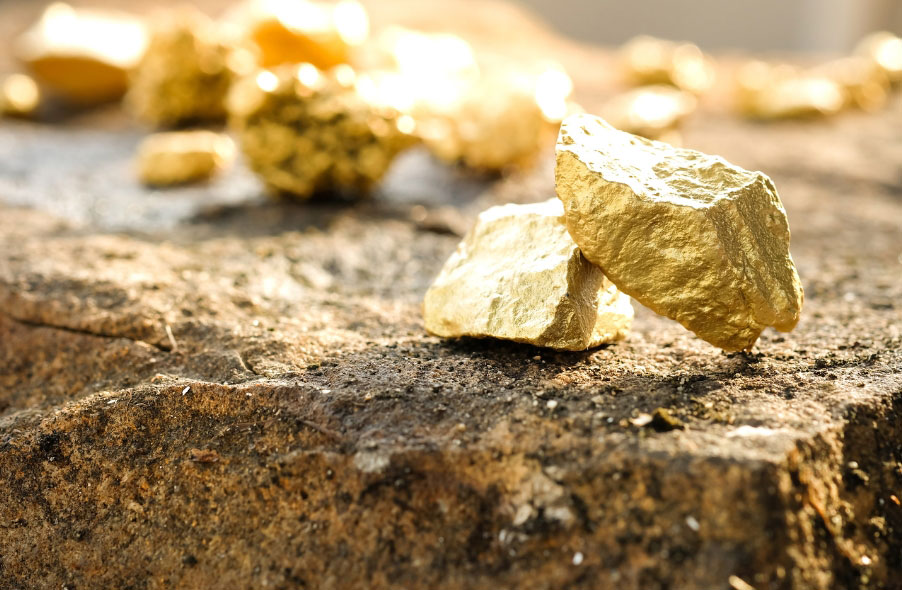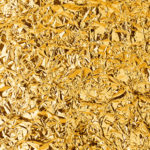In its natural form, pure gold is a soft and malleable metal with the highest achievable purity level of 999.99. Purity levels for gold and other precious metals vary widely depending on their quality and location. Which country has the purest gold? Here on the Learn About Gold blog, we’ll answer all your questions about gold purity, including country comparisons, historical trends, standards and regulations, and more.
Which Country Has the Purest Gold?
One word sums up why gold has long been one of the world’s most popular, valuable, and coveted precious metals: versatility. You’re spoiled for choice, as you can invest in gold jewelry, bullion bars, rare coins, gold IRAs, mining stocks, ETFs, and so on. But, despite its inherent value as a physical asset, some gold is worth more than others. Which country produces the world’s purest gold?
Here’s a hint: Think stretches of desert in dazzling sunlight, mesmerizing and luxurious jewelry, and a thriving precious metals market. Yes, it’s the Emirate of Dubai in the United Arab Emirates (UAE), also known as the City of Gold. It’s the finest gold marketplace in the world and boasts the highest purity levels to boot.
Traveling to Dubai so you can line your pockets with gold? Here are the best locations to purchase gold:
- Gold & Diamond Park
- Dubai Gold Souk
- Malabar Gold & Diamonds
- Joyalukkas
Countries Known for Producing High-Quality Gold

Dubai holds the honor of being the country (more accurately, an independent city-state in the UAE) with the purest gold. Not far behind are a few other countries well known for producing gold of exceptionally high purity.
Bangkok, Thailand: Before it was Thailand, it was named Siam, the Sanskrit word for gold. According to Thailand.se, the country’s gold jewelry typically boasts a purity of 96.5%. Gold prices in Thailand are surprisingly reasonable — but stick exclusively to reputable dealers for purchases. Trusted locations to buy gold include Hua Seng Heng and Tao Toh Kang on Yaoworat Road in Chinatown.
Zurich, Switzerland: You won’t just find delectable chocolate in Switzerland. It’s also a well-respected producer of gold with high purity levels, including jewelry, coins, and bars, some featuring elaborate designs. Head to Tiffany and Co., Chopard, and Bulgari to purchase gold in Switzerland.
Hong Kong, China: Another country that produces high-purity gold bars and jewelry is China, the world’s largest producer of gold. It’s one of the most active gold markets in the world and offers some excellent deals for buyers. The best locations include Chow Sang Sang, Chow Tai Fook, and Lukfook Jewellery.
Cochin, India: Gold is one of India’s most valuable and popular ornaments and precious metals and has sky-high purity levels to prove it. Indian weddings feature a lot of gold, as does the Diwali festival. Find high-purity gold in India at Malabar Gold, Joyalukkas, and Bhima Jewellers.
Comparison of Gold Purity by Country
The standards for purity and gold content around the globe vary based on the country of origin, tradition, cultural trends, economic factors, and more.
North American Countries
In the United States, Canada, and Mexico, the norm for gold is 14 karats. You will find that gold purity levels in the US typically range between 42% to 75%, with the cutoff at 10 karats and above. In Mexico and Canada, gold must be at least eight or nine karats.
European Countries
European countries generally consider the gold standard between 14 and 18 karats, but it’s lower at around eight or nine karats in some places. In Russia, karats for wedding rings will fall between nine and 14 karats, while purity wavers between 37% and 58%.
Asian Countries
In Asia, countries like India, China, and Turkey are quite stringent with gold standards, and the purer, the better. India can have high purity levels (above 90%), averaging 22 karats. The Chinese want no less than 24 karats (999.99), while Turkey’s standards range between 58% to 92% (14 to 22 karats).
Historical Trends in Gold Purity

The love affair between humans and gold goes back to ancient times, when it symbolized wealth and power. Around 1500 BC, the Egyptians developed an innovative method to verify gold purity known as “fire assaying.” The process works by firing a small sample of gold and lead in a crucible made of bone ash. The crucible absorbed the other metals, leaving behind only gold and silver.
Another historical trend in testing purity used touchstones consisting of flint slate. By scratching the gold on the touchstone, it was possible to identify the purity or content of the sample.
Fast forward to around the 1900s, and gold content and purity were slightly different than what they are now. Every goldsmith had their own method of creating gold, with varying levels of alloys. Compared to today’s gold, most antique gold has a warmer look and a copperish tone. The current demand for fine gold (gold purity above 90%) is still strong, with countries like India, Dubai, and China being some of the biggest producers and importers of 999.99 gold.
How Is Gold Purity Measured?
The karat scale is the best way to measure gold purity:
- 8 karats: 33.3%
- 10 karats: 41.7%
- 12 karats: 50%
- 14 karats: 58.3%
- 18 karats: 75%
- 22 karats: 91.7%
- 24 karats: 99.9%
In addition, you can measure the content or purity of gold with some simple tests. Use a magnifying glass to inspect your gold for abnormalities, discoloration, and excessive shininess. Or, use a magnet — pure gold is not magnetic, whereas low-quality gold with base metal alloys is. Another easy test requires only a cup of water. Gold is very dense, so it will instantly sink in a cup of water. Gold alloys may float, hover, or even tilt. However, gold with heavy metal alloys may also sink.
What Factors Can Affect the Purity of Gold?
The following three properties can affect the purity of gold:
Radioactive: Uranium and thorium may occur in minimal amounts, which can be problematic for electronic applications.
Non-metallic: Oxide particles containing magnesium or chromium can affect the purity of gold, but only in very thin strips or wires.
Metallic (elemental): The most common contaminant in gold is silver. However, most 10k and 14k gold alloys contain at least 10% silver. Next are iron and copper, followed by lead and other impurities like palladium, silicon, and platinum.
How Do Laws and Regulations Impact the Purity of Gold Produced in Different Countries?

Every country has different laws regarding the purity of gold. We break them down below:
| Country | Karatage Fineness | Marking System | Marking Tolerance |
| United States | 18k/750
22k/916 24k/990-999 |
Compulsory | Negative |
| United Kingdom | 18k/750
22k/916 24k/990-999 |
Hallmarking | Zero |
| China | 18k/750
22k/916 24k/990-999 |
Compulsory | Zero |
| India | 18k/750
22k/916 23k/958 24k/999 |
Voluntary Hallmarking | Zero |
To explain further, the United States has regulations regarding purity for karatage minimums, nickel content, and conflict mineral status. For example, 14k must contain at least 58.3% gold content to meet legal standards.
Gold and Precious Metal Investment Advice From Learn About Gold
So, the answer to “Which country has the purest gold?” is Dubai, in the UAE. At Learn About Gold, we want the general public to have free access to information about precious metal investing, like gold IRAs, physical bullion, and gold jewelry. If you’d like to learn more about gold as a form of diversification for your investment portfolio, we’d be happy to help.
Contact Learn About Gold now by sending us a quick message, and our financial experts will get back to you promptly.





